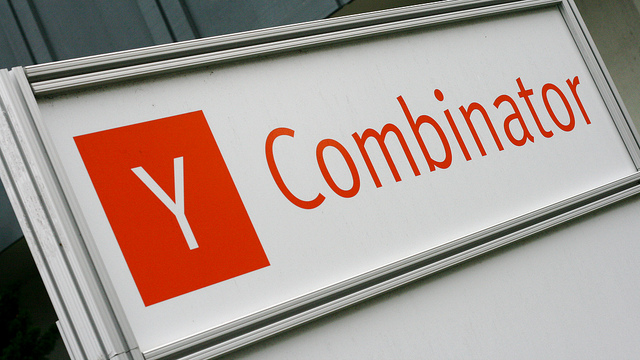Kodak‘s demise.1
Approximate read time: 23 minutes
You already know the answer…
Technology = The Future.
In January 2012, Eastman Kodak Company filed for bankruptcy in New York and one month later, Kodak announced it would cease manufacturing cameras.
Wow!
How could this have happen to an iconic brand with market dominance?
What a way to end a chapter in photographic history!
Especially when Kodak had transformed photography by providing the means of taking photographs by everyone.
This was probably best captured by the Google-it-esque slogan, “a Kodak moment.”
But Kodak was caught out in time and for whatever reason their executives did not understand that the world was changing and companies where being disrupted – their market, their customers habits, their revenue streams and their technology.
“Digital” is the iceberg, the unseen force, that is sure to sink many other corporate Titanic’s in the future.
Don’t believe me?

Marc Andreessen and Ben Horowitz.
Marc Lowell Andreessen is the entrepreneur who, amongst other things, co-authored the world’s first web browser, Mosaic, the co-founded Netscape and is currently the co-founder and general partner of Andreessen Horowitz.
Andreessen Horowitz is a US$4 Billion dollar Venture Capital firm in Silicon Valley, which has invested in companies such as Facebook, AirBnB, BuzzFeed, Groupon, Foursquare, Oculus Rift, Pinterest, Skype, Twitter and a raft of others…
With this portfolio, Andreessen knows a thing or two about digital disruption.

Marc Andreessen’s Why Software Is Eating The World article.
In 2011 (four years in digital is a long time ago) he wrote a very compelling piece on digital disruption in The Wall Street Journal called Why Software Is Eating The World in which he gave a grave prediction:
“Over the next 10 years, I expect many…industries to be disrupted by software.”2

Peter Diamandis.
According to Peter Diamandis, the chairman of the X Prize Foundation and the co-founder and executive chairman of Singularity University, along with many other things, says as soon as something is digitised, it is on the speeding-train-without-brakes to disruption.
Let me repeat…
As soon as something is digitised, it is on the speeding-train-without-brakes to disruption.
Got it?
Good!
Software is only one of these threats.
We have exponential digital technologies that offer similar pressure to legacy brands:
- Robotics;
- 3D printing;
- Energy storage;
- Mobile internet;
- Nano technology;
- Synthetic biology;
- Cloud computing;
- Advanced materials;
- Artificial intelligence;
- Networks & sensors;
- Autonomous vehicles;
- Personalized genomics;
- And many, many more…
So, how does a corporate inoculate itself against following Kodak’s footsteps?
How do they foster new ways of approaching innovation and solving corporate challenges to stay up-to-date in an increasing changing, digitising, disrupting world?
Innovating like they did in the past is not the answer.
The approaches used by startups can be adopted by corporations incrementally in three stages:
- Hackathon
- Incubation
- Acceleration
Let’s explore…
1. Hackathon
A hackathon is an event in which participants collaborate intensively for a short period of time, with no resources to create innovative solutions to existing problems.
Hack or hacking from the word hackathon, shouldn’t be confused with gain unauthorized access to systems or writing software.
In this context, it refers to creating shortcuts that increase output.
Hackathons are short events that are low-risk, yet high-yield.
A hackathon ideally runs over 2 or 3 days where participants determine problems to solve on the first and spend the next few solving them, all culminating in a pitch on what they have achieved.
And for corporates, they can learn from and behave like startups – their hustle, their urgency, their sense of purpose, their resourcefulness, their creativity, their agility and their speed to market and their unique perspective – all without “betting the farm.”
What is a startup?

Steve Blank.
A startup company (note, no hyphen), according to Steve Blank, a Silicon Valley serial-entrepreneur and academic who is recognized for developing the Customer Development methodology, which launched the Lean Startup movement, is a temporary organization designed to find a new, repeatable and scalable business model for a product or company.
It’s not a small business or upstart.
It’s an important distinction.
The aim of a Hackathon is to find a new, repeatable and scalable business model for a product or company.
Hackathons are effective because of a few intentional factors in-built that increase productivity and creativity so that participants are forced to pick the critical few tasks not the trivial many to complete their goal.
Those factors are based on the following principles:
- Public accountability – participants are required to tell their peers what they plan on doing then report on what they have done;
- Parkinson’s Law – say that work expands so as to fill the time available for its completion. The short time frames of hackathons are built on this law;
- The Pareto Principle – says that, roughly 80% of the effects come from 20% of the causes. Again short time frames of hackathons are built on this principle.
Hackathons also replicate what really happens in the real world, but without the same consequences:
- Things break;
- People disagree;
- Customers don’t buy;
- Leadership falls short;
- Teams are dysfunctional;
- Technology malfunctions;
- Procrastination takes over;
- Products can’t be validated;
- Time and resources runs out;
- Workplace’s have pressure and deadline;
- And many, many more…
Through desensitisation, participants know how to respond in actual work situations.
50km/hr feels fast, but it also feels slow when you come off a highway at 100km/hr.
The hackathon process helps staff feel the same in their regular work life.
As a side note, I have participated in several hackathons, incubators and accelerators:
- Startup Weekend Sydney;
- Adelaide Universities Entrepreneurs Challenge Incubation program;
- Mobile Enterprise Growth Alliance Incubation program;
- ANZ’s Innovyz Start Acceleration program.
Based on this experience, I went on to run, organize or mentor several hackathons, incubators and related programs and, I am, arguably one of the most experienced people in Adelaide (and possibly Australia) in this field; some of my related credentials are:
- I brought Startup Weekend to Adelaide in 2012 (which now has completed 6 sold out events with 600+ local alumni);
- I am a Startup Weekend global facilitator (I’ve been involved in 10+ hackathons events globally);
- I am a co-founder and current director of not-for-profit Startup Adelaide Inc – a not-for-profit organisation that exists to foster and support the Adelaide tech startup sector;
- I am a co-founder and administration of the Startup Adelaide forum which has 700 members;
- I am the co-founder of Business Higher Education Round Table award winning program Venture Dorm (100+ alumni with total company valuations of $5.5M) which merged with Mobile Enterprise Growth Alliance to be Australia’s largest community pre-accelerator program;
- I am the former Director of Marketing for Mobile Enterprise Growth Alliance;
- I am the former Marketing Manager of New Venture Institute at Finders University;
- I am the Australia Day Citizen of the Year for Unley (2015)for my contribution to building the Adelaide startup ecosystem;
- I was recognised in Startup Daily’s “Top 50 Australian Startup Influencers” in Australia and “Mentors you should know in the startup space, Adelaide Edition”;
- I won an honorable mention in Australian Anthills 30 under 30 award for my contribution to building the Adelaide startup ecosystem;
- I am and independent member of the Business and Economic Development Committee for Unley Council;
- I was on the judging panel for The Australian Centre for Social Innovation’s Aging Challenge in 2015.
So, back to our discussion, who is already running hackathons?
According to Fast Company Magazine:
“One of America’s oldest toy companies, Hasbro, recently held a hackathon where 150 developers came and developed 45 products—equivalent to billions of dollars in traditional R&D.”3
10 years ago that claim would be preposterous.
Today, it’s an unprecedented return-on-investment!
Let’s now look at 3 types of Hackathons…
1.a. Community Based Hackathons

Startup Weekend Adelaide event #3.
Community based hackathons bring together external commercial participants to work on external commercial problems, usually their own or ones they are excited about – external participants work on any external problem or solution within the events parameters.
Arguably the biggest player in this field is Startup Weekend.
I brought Startup Weekend to Adelaide in 2012 (which now has completed 6 sold out events with 600+ local alumni).
Startup Weekend is a 54-hour weekend event, during which groups of developers, business managers, startup enthusiasts, marketing gurus, graphic artists and more pitch ideas for new startup companies, form teams around those ideas, and work to develop a working prototype, demo, or presentation by Sunday evening having started on Friday evening.
Startup Weekend has grown into an organization with a global presence.
They solely play in the community based hackathon sandbox.
Startup Weekend is a global network of passionate leaders and entrepreneurs on a mission to inspire, educate, and empower individuals, teams and communities, share ideas, form teams, and launch startups.
Approximately 10% of participants are able to generate revenue within 54 hours of idea generation.
Yes, read that again, approximately 10% of participants are able to generate revenue within 54 hours of idea generation
I’m not sure where else you can see those sorts of results.
Let’s examine the advantages of community based hackathons…
Advantages
There are upsides to for participants of community based hackathons:
- Have fun;
- Win prizes;
- Meet new people;
- Compete for prizes;
- Learn something new;
- Build a team around their business idea;
- Gain exposure to investors and advisors;
- Validate a business model;
- And many, many more…
Next, let’s examine the disadvantages of community based hackathons…
Disadvantages
Yes, there are downsides to community based hackathons:
- Discussions about IP ownership;
- Negotiating co-founder agreements;
- Varying commitment of the team members;
- Navigating equity division between founders.
Community based hackathons generally are not applicable to corporates; however they give birth to the next two important examples.
If you are not getting at least 80 participants to your events, you are doing something wrong!
1.b. Internal Based Hackathons
Internal based hackathons bring together internal corporate participants to work on internal corporate problems – internal corporate participants can work on any internal corporate problem or solution within the events parameters.
There are very few providers, if any, in Australia experienced in designing and delivering successful corporate hackathons.
Let’s examine the advantages of internal based hackathons…
Advantages
There are several upsides for corporates with internal based hackathons as they leverage staff knowledge of how the company operates.
A hackathon can create innovative solutions for a corporate.
These can be grouped into 3 broad categories:
R&D
- Enables quick prototyping;
- Develops product roadmaps;
- Provides corporate solutions;
- Makes innovation manageable;
- Saves substantial development costs;
- Allows experimentation with new tools;
- Dedicates time to producing prototypes;
- Opens up the possibility of internal incubation and investment;
- Generates new products, new capabilities and new technology.
Productivity:
- Increases day-to-day output;
- Forces new ways of working;
- Provides focus on doing not talking;
- Removes the constrains of the “9-5”;
- Increases energy and morale amongst staff;
- Creates a friendly competitive environment;
- Creates new ways of thinking for employees;
- Grants staff to work on ideas outside day-to-day operations;
- Permits freedom for staff to work beyond their normal roles and responsibilities;
- Upskills staff in technology, problem solving, leadership, uncertainty, pressure, communication teamwork, collaboration and pitching.
Culture:
- Provides a culture shift;
- Enables a maker and action culture;
- Changes the culture of the company;
- Fosters a culture of “intrapreneurship”;
- Increases retention and sharing of skills;
- Builds stronger work relationship internally;
- Offers opportunity for juniors to meet senior staff;
- Create a “game” and completion element to work;
- Helps internal change initiatives and workflow shifts;
- Connects disparate parts of business for collaboration;
- Sends a positive message to employees about the company’s future.
Many of these advantages have lasting effects in the culture post hackathon.
Next, let’s examine the disadvantages of internal based hackathons…
Disadvantages
There are a few downsides to internal based hackathons:
- Lack of staff buy-in;
- Fear of the “unknown” by management;
- Inability to put operations on hold for the event.
If you are not getting at least 80 participants to your events, you are doing something wrong!
1.c. External Based Hackathons
External based hackathons bring together external corporate participants to work on internal corporate problems – external participant can work on any internal corporate problem or solution within the events parameters.
Again, there are very few providers, if any, in Australia experienced in designing and delivering successful corporate Hackathons.
Let’s examine the advantages of external based hackathons…
Advantages
There are positives for corporates with external based hackathons too.
Many of these have been outlined in the advantages section of internal based hackathons above.
The addition to this list is:
- Diversifies solutions and ideas by opening the event up to community.
Next, let’s examine the disadvantages of external based hackathons…
Disadvantages
Like community based hackathons, there are the same downsides related external based hackathons, but the following is added:
- Relegation of trust with opening data, IP and assets:
- Non-Disclosure Agreements and decentralize data and IP to the public.
If you are not getting at least 80 participants to your events, you are doing something wrong!
[fancy_box id=4][content_upgrade id=1562]Do you want to know how to organize a hackathon to foster new ways of approaching innovation and solving challenges in your corporate?[/content_upgrade][/fancy_box]
So where do participants go after a Hackathon?
Incubation and acceleration.
Let’s explore those…
2. Incubation

Venture Dorm #2 Pitch Day.
Incubation programs (or pre-accelerators), and specifically internal corporate incubators, extend the hackathon journey through incubating the solution and product for longer periods of time.
Incubation programs allow founders to develop their business model, products and markets far deeper and more comprehensively than they can in a hackathon and can broach the issues identified in the disadvantages sections above while receiving mentorship and education.
The aim of an incubation program is to refine the new, repeatable and scalable business model for a product or company.
Again, there are very few providers, if any, in Australia, experienced in designing and delivering successful internal corporate incubators.
I am the co-founder of Business Higher Education Round Table award winning program Venture Dorm (100+ alumni with total company valuations of $5.5M) which merged with Mobile Enterprise Growth Alliance to be Australia’s largest community pre-accelerator program.
Let’s examine the advantages of internal corporate incubation programs…
Advantages
Incubation programs have upsides for corporate teams, namely:
- Increases knowledge of the problem, market and technology;
- Permits time and exploration of the business model in far greater depth.
Next, let’s examine the disadvantages of incubation programs…
Disadvantages
As you imagine, there are downsides to incubation programs too:
- Lack of much needed capital;
- The need for balance with external priorities.
The culmination of an incubation program ideally leads into an acceleration program.
This may also mean the corporate hires the external team or purchases their IP at a fraction of their tradition R&D cost.
If you are not getting at least 50 applications to your program, you are doing something wrong!
3. Acceleration

Y Combinator.4
Acceleration programs extend the incubation journey.
In 2005, venture capitalist, Paul Graham co-founded Y Combinator, the world’s first startup accelerator in Cambridge, Massachusetts.
Startup accelerators have a highly competitive cohort application and selection process and the programs run for a fixed-term (usually three months).
An accelerator can support any number of product verticals which are looking to return substantial investment multiples rather than fee for services.
The program ends with participants graduating in a pitch event or demo day.
Each cohort company receives seed funding in exchange for equity, recognition, mentorship, networking, introductions and common work space; however they also receive invaluable peer support and feedback.
The aim of an acceleration program is to accelerate the growth of a new, repeatable and scalable business model for a product or company.
Again, there are very few providers in Australia, if any, experienced in designing and delivering successful internal corporate accelerators.
According to TechCrunch, in 2014, the American multinational banking and financial services holding company, Wells Fargo launched an accelerator because it wants startups to become vendors of the bank:
“By allowing the companies to remain non-exclusive, [Wells Fargo Vice President Braden] More says they can grow more by pursuing other investors, which in the long run could pay off for Wells Fargo if it were to partner with the startups as vendors.”5
Wells Fargo is not the only corporate – Coca-Cola is doing the same. According to TechCrunch, startups…
“Put a fresh set of eyes on a problem. And even a company like Coke with more than 700K employees spread across nearly 200 countries needs that once in a while.”6
Let’s examine the advantages of internal corporate accelerators…
Advantages
You may have guessed, the upsides to internal corporate accelerators are:
- Much needed capital;
- Access to world class Mentorship, networks and introductions.
Next, let’s examine the disadvantages of internal corporate accelerators…
Disadvantages
As hinted at already, there are downsides to accelerator programs:
- Giving up equity;
- Short program time frames.
The culmination of an acceleration program usually leads to more rounds of investment, product commercialisation, high user growth or revenue.
If you are not getting at least 100 applications to your program, you are doing something wrong!
4. What’s Next?
So, now you can access the same approaches startups use to hone and foster new ways of approaching innovation to stay up-to-date in an increasingly changing, digitising, and disrupting world without “betting the farm.”
You’re ready…
You’ve got everything you need to begin the journey to avoid being the next Kodak.
Start fostering new ways of approaching innovation today.
You have no excuse!
…Unless you want to stop manufacturing cameras.
Do you want to know how to organize a hackathon to foster new ways of approaching innovation and solving challenges in your corporate?
Contact me to find out more:
Footnotes
- https://www.flickr.com/photos/hmoong/7568616552
- http://www.wsj.com/articles/SB10001424053111903480904576512250915629460
- http://www.fastcolabs.com/3030628/why-do-big-companies-do-hackathons
- https://www.flickr.com/photos/paulmiller/5475205694/in/photolist-9kPRUb-9kLNa8-9kLLN8
- http://techcrunch.com/2014/08/20/wells-fargo-launches-accelerator-to-promote-innovation-in-financial-services
- http://techcrunch.com/2014/11/10/coca-cola-hopes-its-startup-incubator-is-the-real-thing

